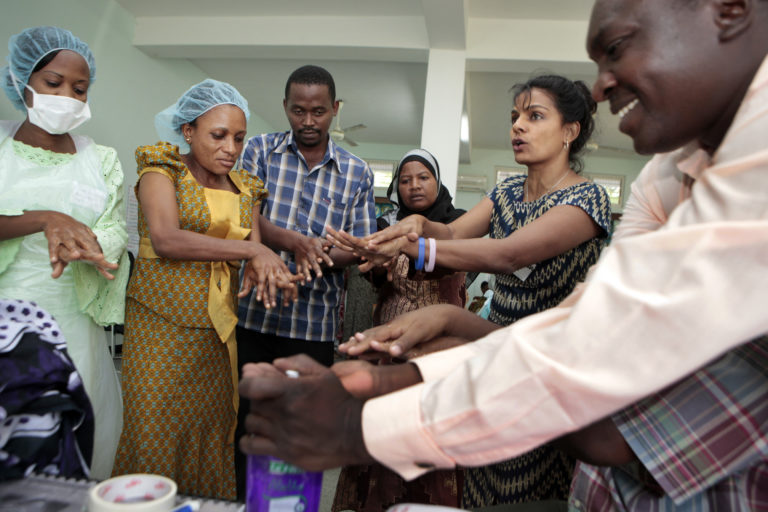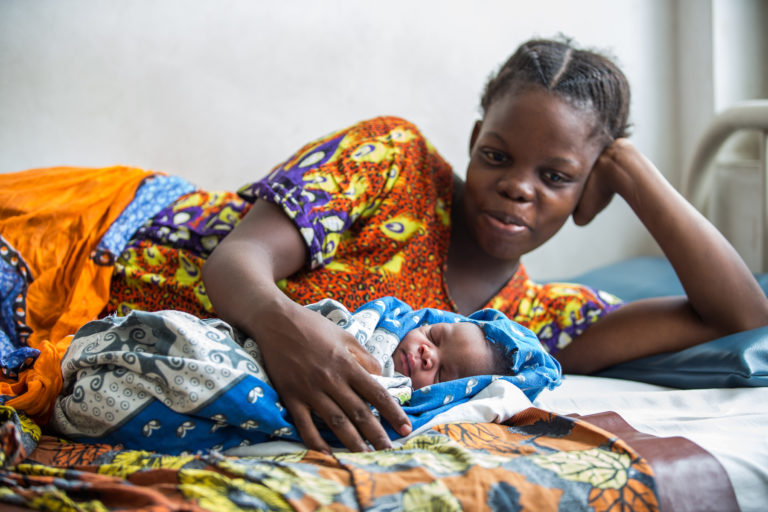No Mother Left Behind: Building an inclusive environment for expectant mothers

We need to talk about inclusion.
Women with disabilities have the same rights to high quality health services – including maternal and sexual and reproductive healthcare services – as everyone else. In Tanzania, an estimated 4.2 million people live with a disability, and estimates suggest disability affects more women than men: approximately 1.8 million men and 2.4 million women. Yet their needs and rights are often neglected or overlooked: particularly when it comes to obstetric care.
For an expectant mother living with a disability in Tanzania, pregnancy compounds her vulnerability. Often, she may not have access to information about her own reproductive rights or maternal health services. She may struggle to communicate with providers to understand important health information, or she may be physically unable to access facilities.
Expectant mothers with a disability also face the consequences of insufficiently trained healthcare providers which can cause distrust and a lack of respect between patient and provider, leading to potentially life threatening consequences. A mother with a hearing impairment, for example, has shared that her nurse was unaware of her condition during delivery. Every time the nurse said “push”, the patient thought she was saying “wait” – a dangerous break-down of communication that put the life of both mother and baby at risk. Another mother was blind and had to remind the nurse that she was blind, but not unintelligent or unable to speak for herself.

So how can healthcare providers build a more inclusive environment for pregnant women living with a disability?
1.Include people with disabilities in the design of your programs
The most effective way to ensure that programs are fully inclusive is to consult with members of the community you are aiming to serve. Before we started the CCBRT Maternal & Newborn Healthcare Capacity Building Program, we held a focus group discussion for women with disabilities, to better understand their experiences in accessing maternal and newborn healthcare services. During these discussions we heard stories of neglect, rudeness, and lack of communication from healthcare providers. From that point, we were no longer operating on assumptions and could design interventions to solve real problems based on real experiences. I can’t stress the importance of this enough: the only way to ensure the rights of all women are realized is to give them a voice in the design of their own healthcare services.
2. Train your teams
Invest in training. Healthcare providers have a responsibility to accommodate the needs of every patient. Women with disabilities are not less intelligent or capable but may require a different approach to their care. Healthcare workers need to be sensitized to the challenges facing people with disabilities and be trained to care for them properly. There must be zero tolerance for mistreatment in any healthcare setting.
Sign language trainings have also been particularly impactful in our program. Even if nurses are not fluent in sign language, the fact that they are working to communicate with hearing impaired patients changes everything. I remember a patient with a hearing impairment was very upset when nurses tried to treat her sick baby. When the nurses used sign language to explain what they were doing, her demeanour changed because she understood what was happening and felt included in the decisions about her child’s care.
Another woman delivering at a partner facility had an impairment making it difficult for her to breastfeed or carry her baby. The staff had been trained in disability inclusion and decided to circumvent the normal practice, allowing her relatives to visit the ward to help her – this is not a common practice in Dar es Salaam’s packed health facilities but made a significant difference in the patient’s experience.
3. Invest in infrastructure
It may seem obvious but the accessibility of physical spaces in maternity facilities is critical. We must ensure that buildings have ramps and that wards, restrooms, consultation rooms and waiting areas are designed to accommodate wheelchair users. It’s also important to install examination beds that can be adjusted to different heights.
There’s work to be done.
Following these steps has led to great improvements in the accessibility of maternal and newborn healthcare services in Dar es Salaam, Tanzania. But our program is still young. We need to continually advocate for the rights of women with disabilities and for the skills of healthcare workers providing inclusive care. These are new skills, so if they aren’t used, they’ll be forgotten.
We need to see inclusion integrated into all healthcare training programs, with every clinician graduating with knowledge of inclusive care. Protocols for care must be developed and implemented for different kinds of disabilities. And most importantly, we need data to help us make informed decisions around program design.
Every mother has the right to respectful, high quality healthcare, especially during pregnancy and childbirth, when many women are at their most vulnerable. Prioritizing investments in inclusion will ensure that no mother is left behind.
---
BIO: Dr Brenda D'mello is an OBGYN in Dar es Salaam, Tanzania. She is currently the manager of a comprehensive, collaborative, disability-inclusive maternal and newborn healthcare capacity building program that trains and mentors frontline healthcare workers in 23 public health facilities.


